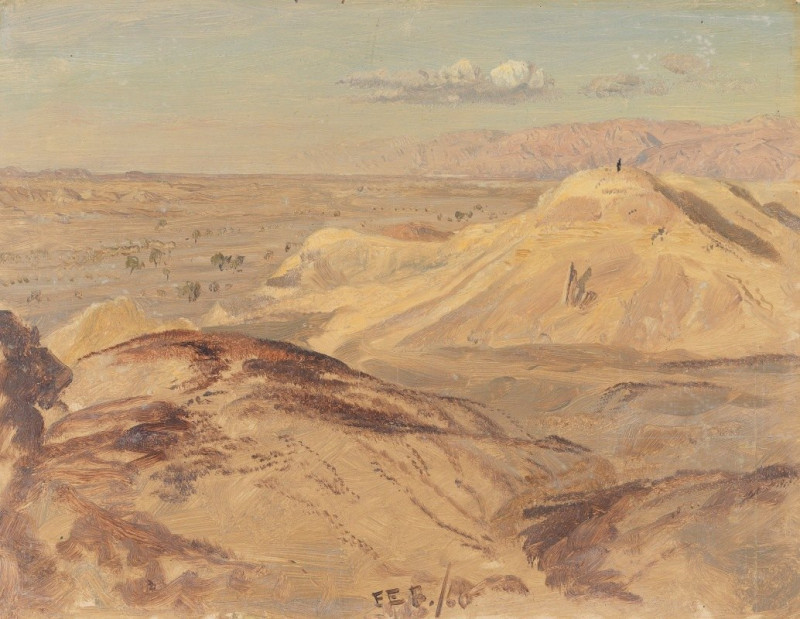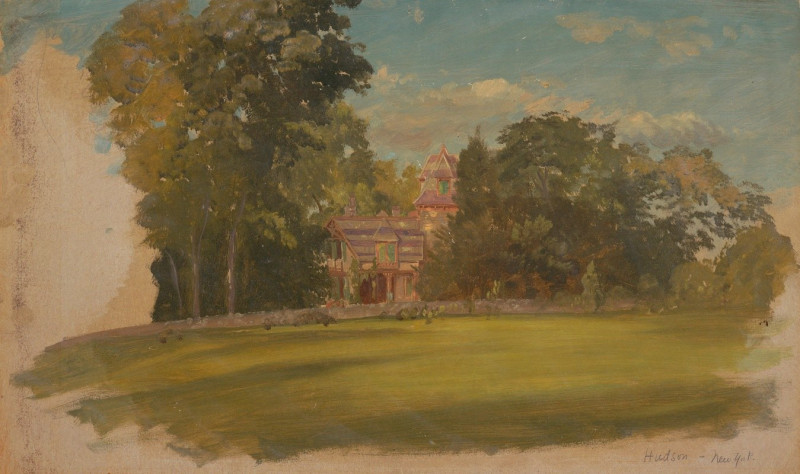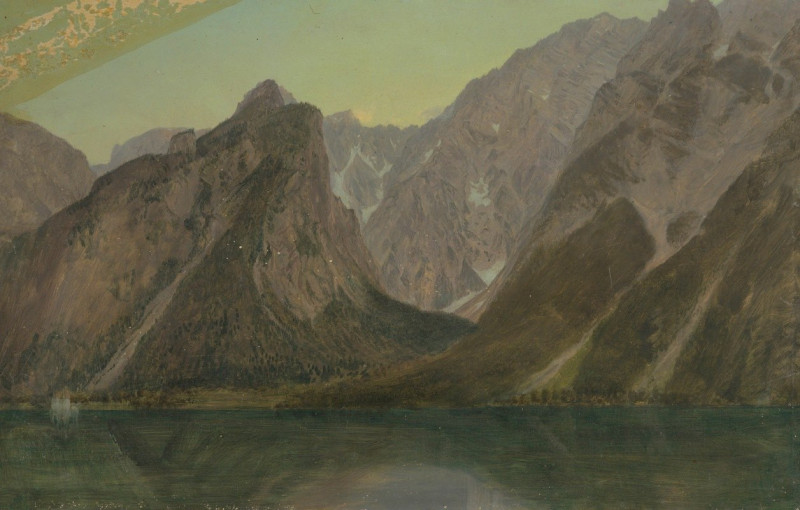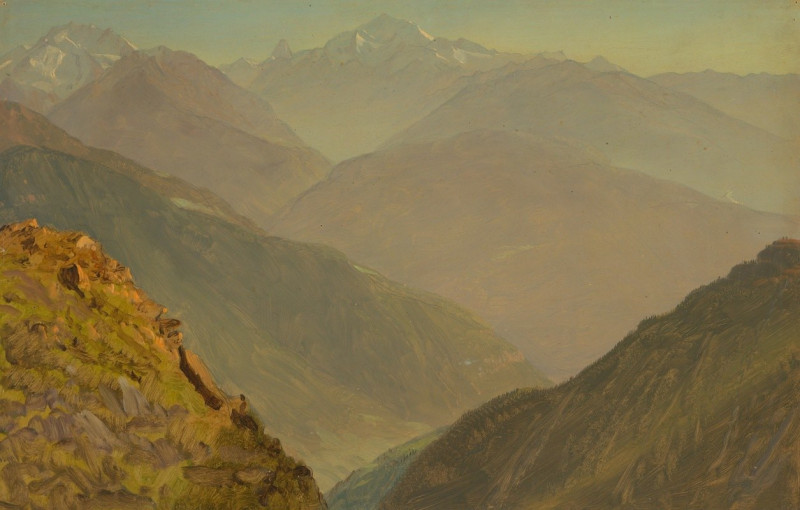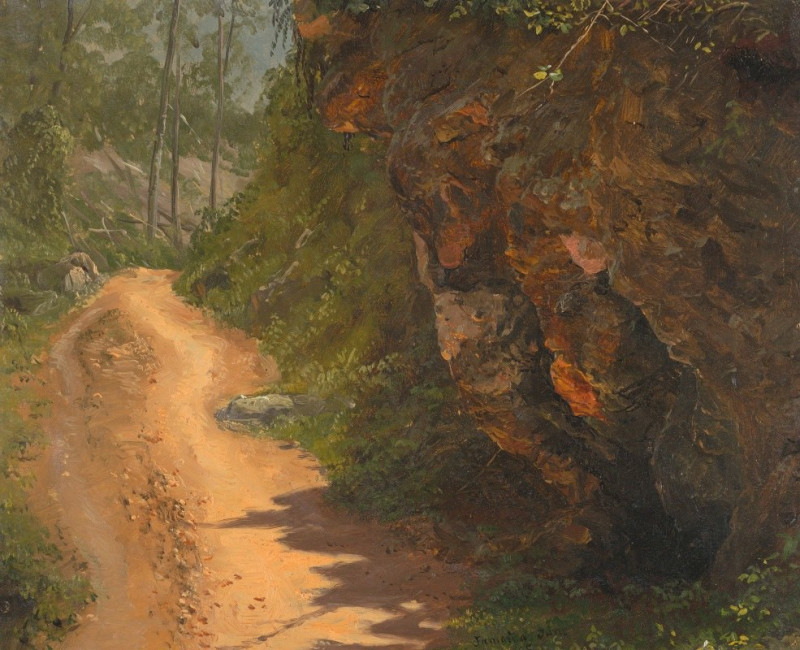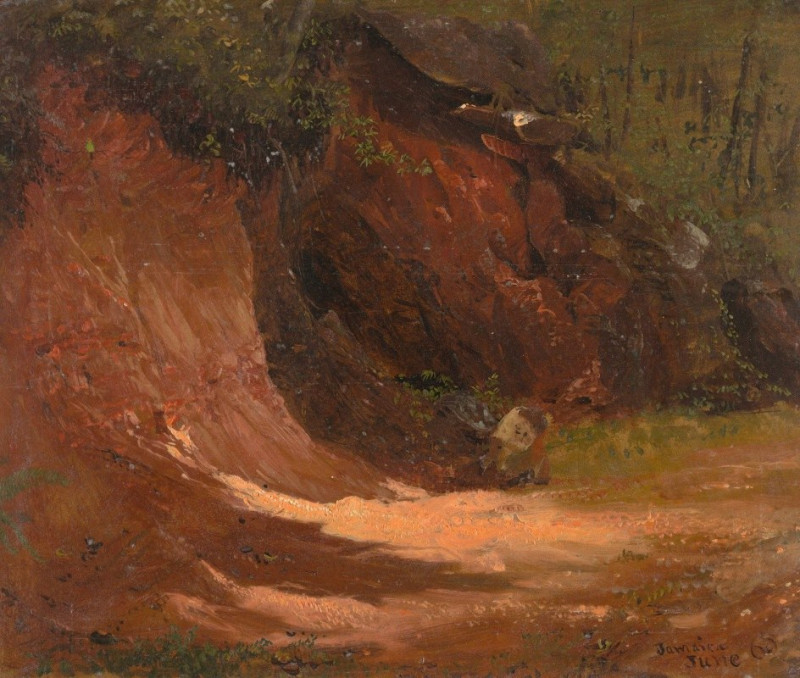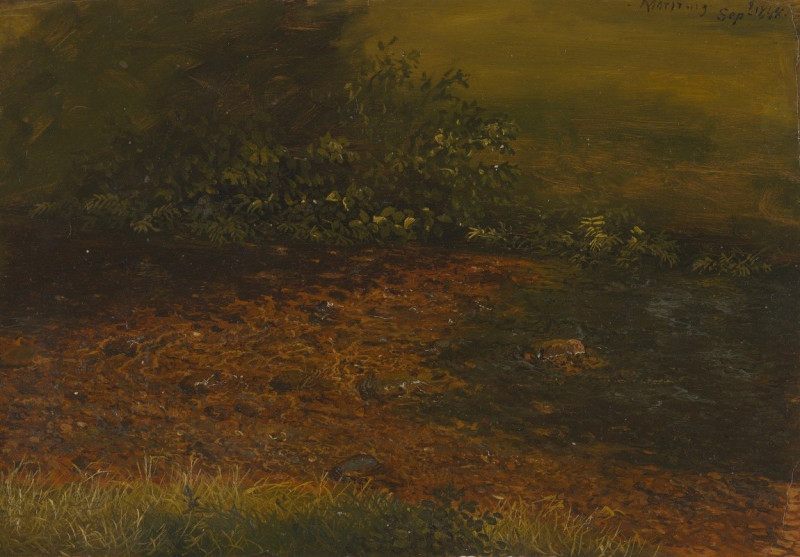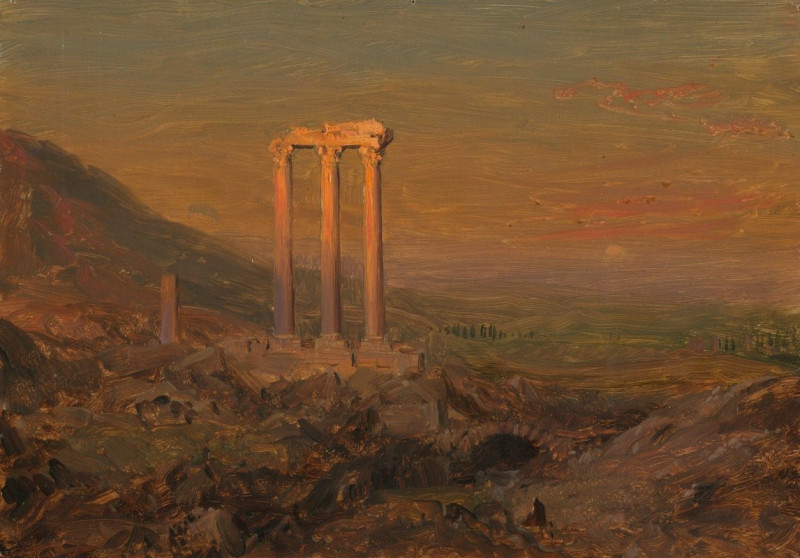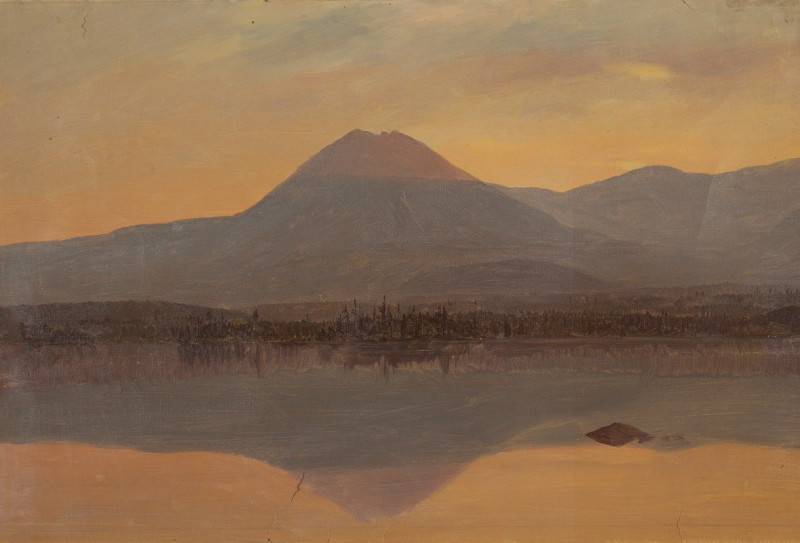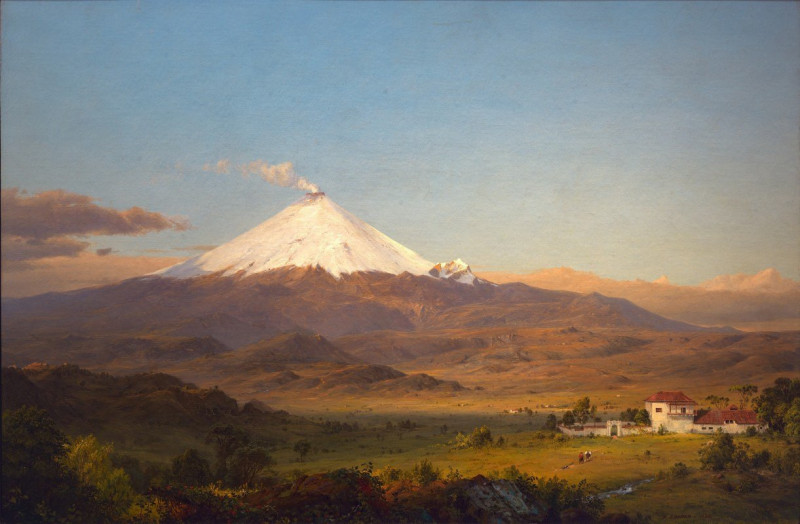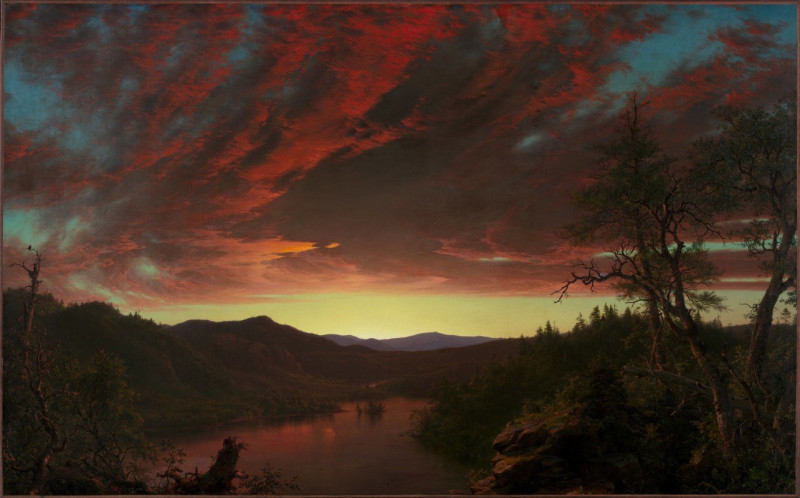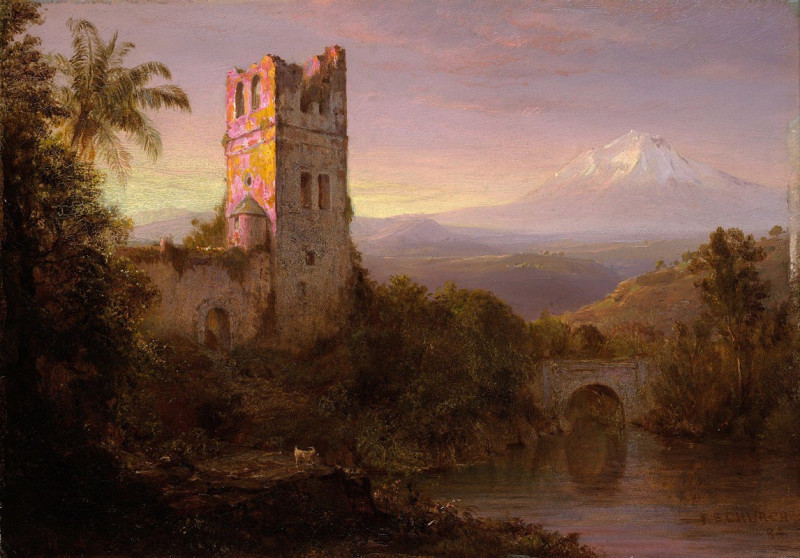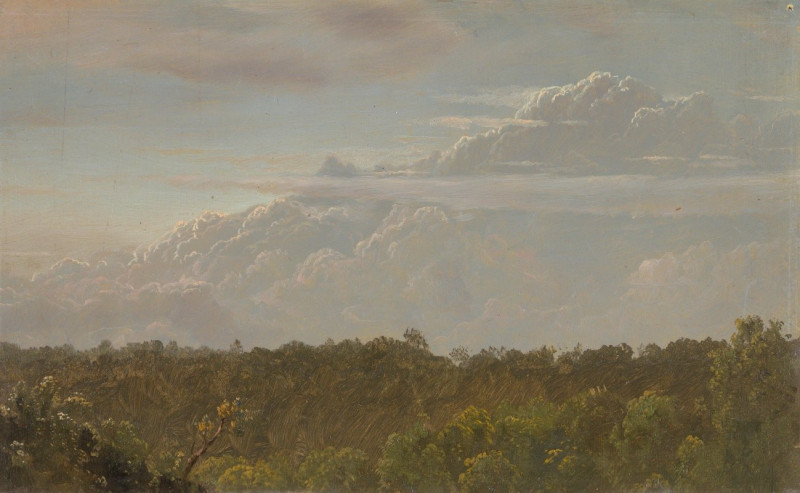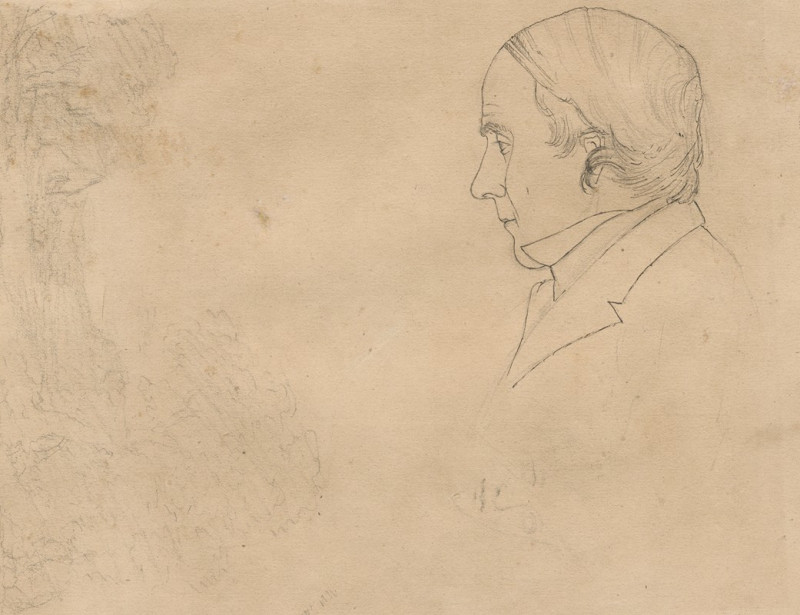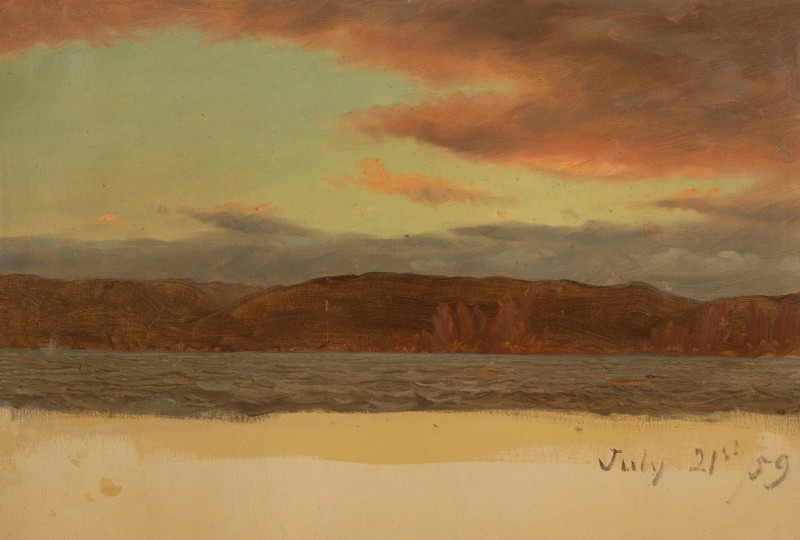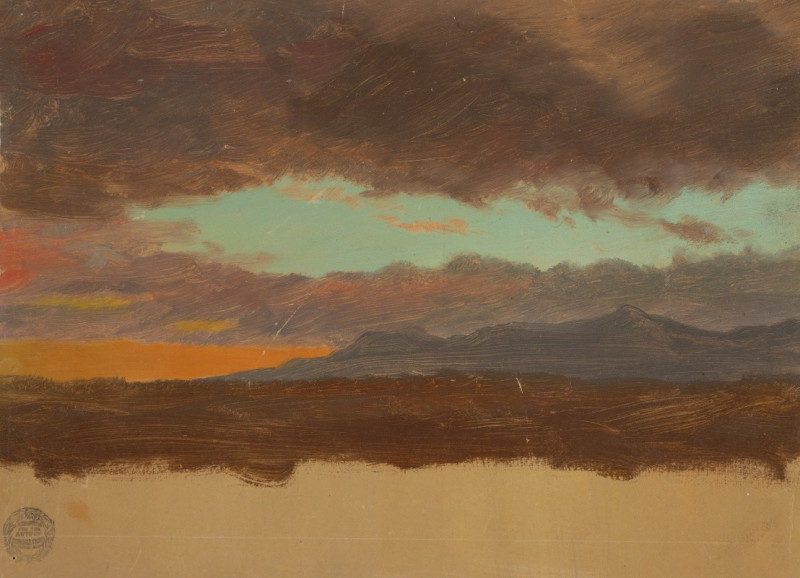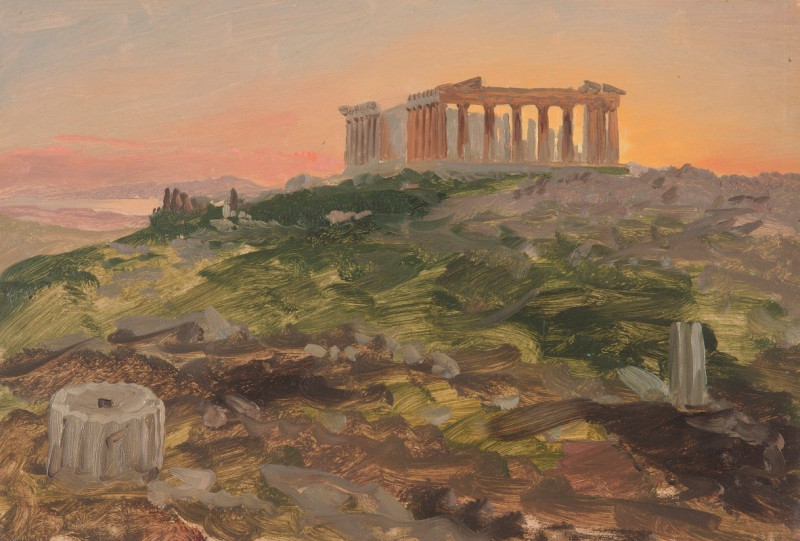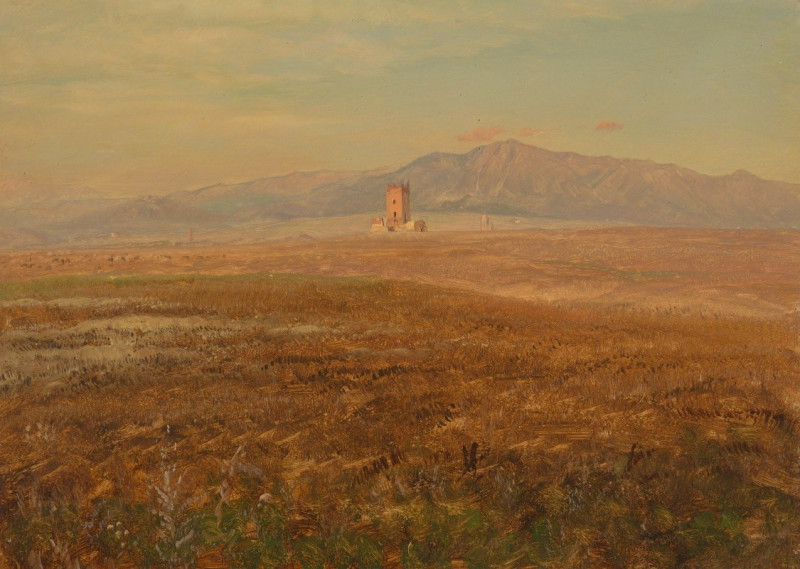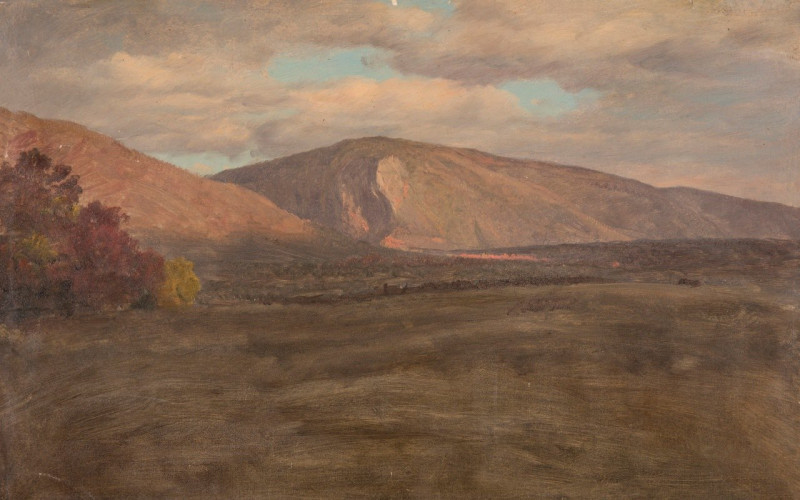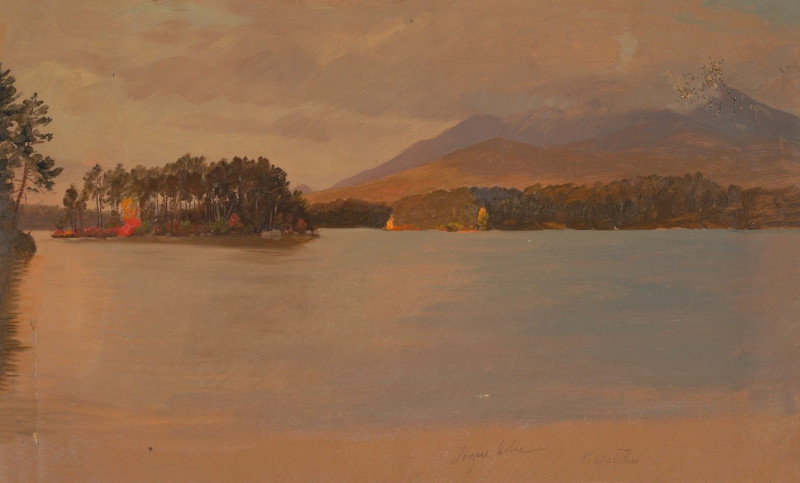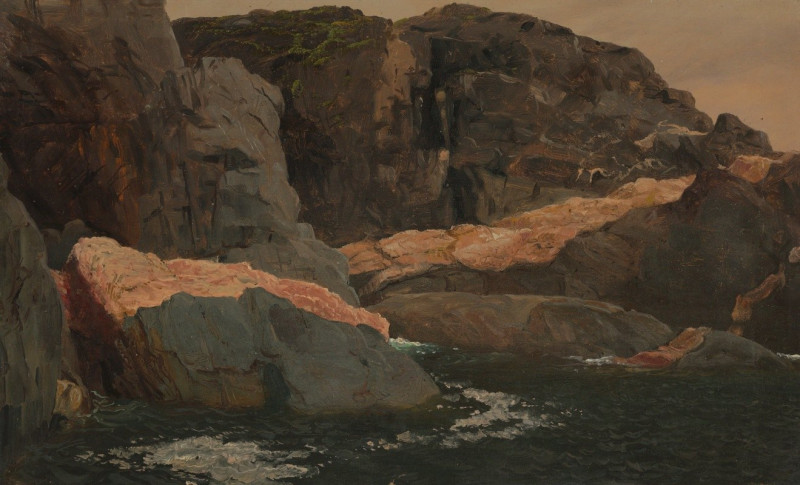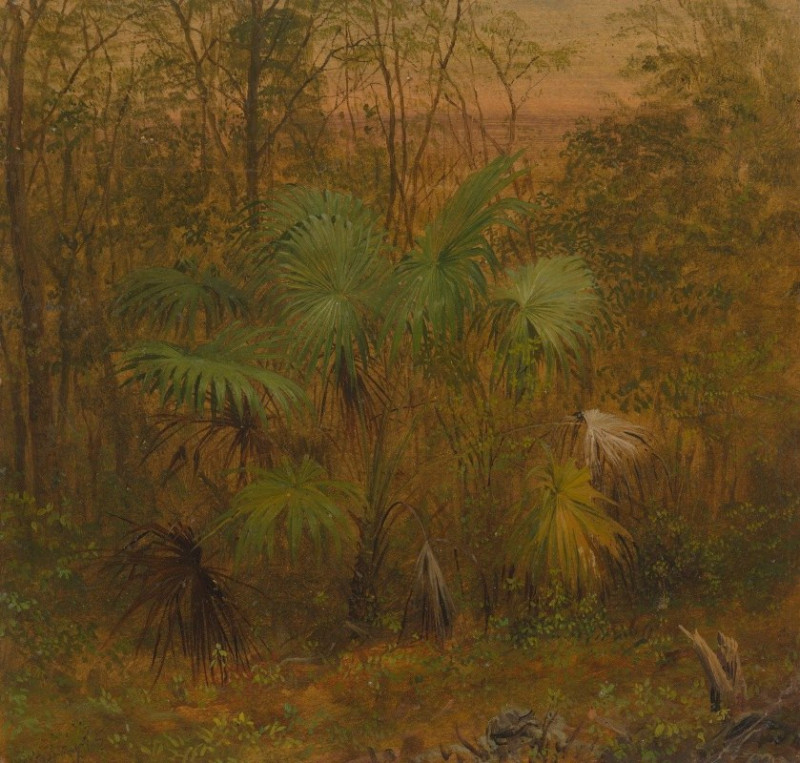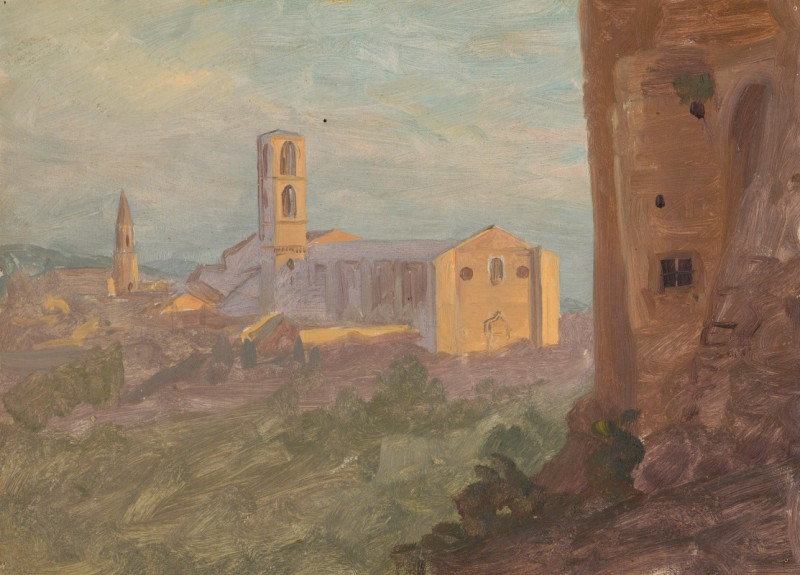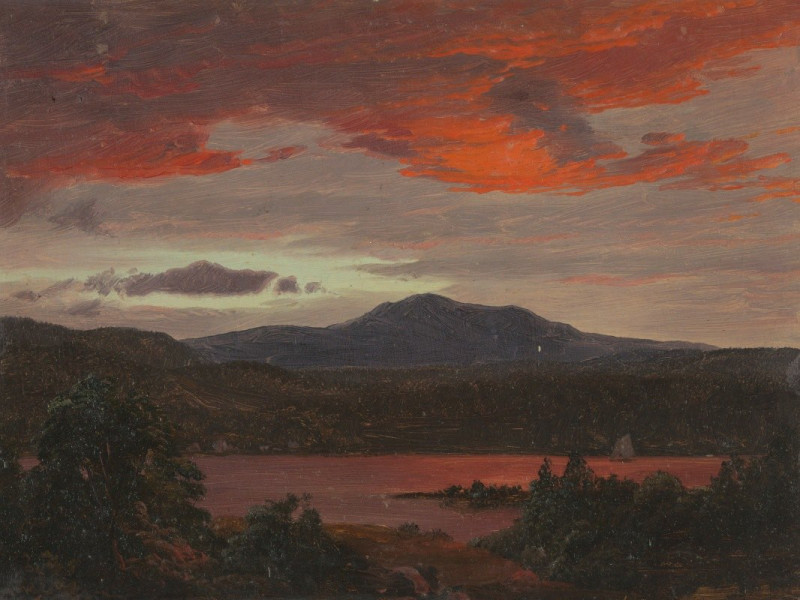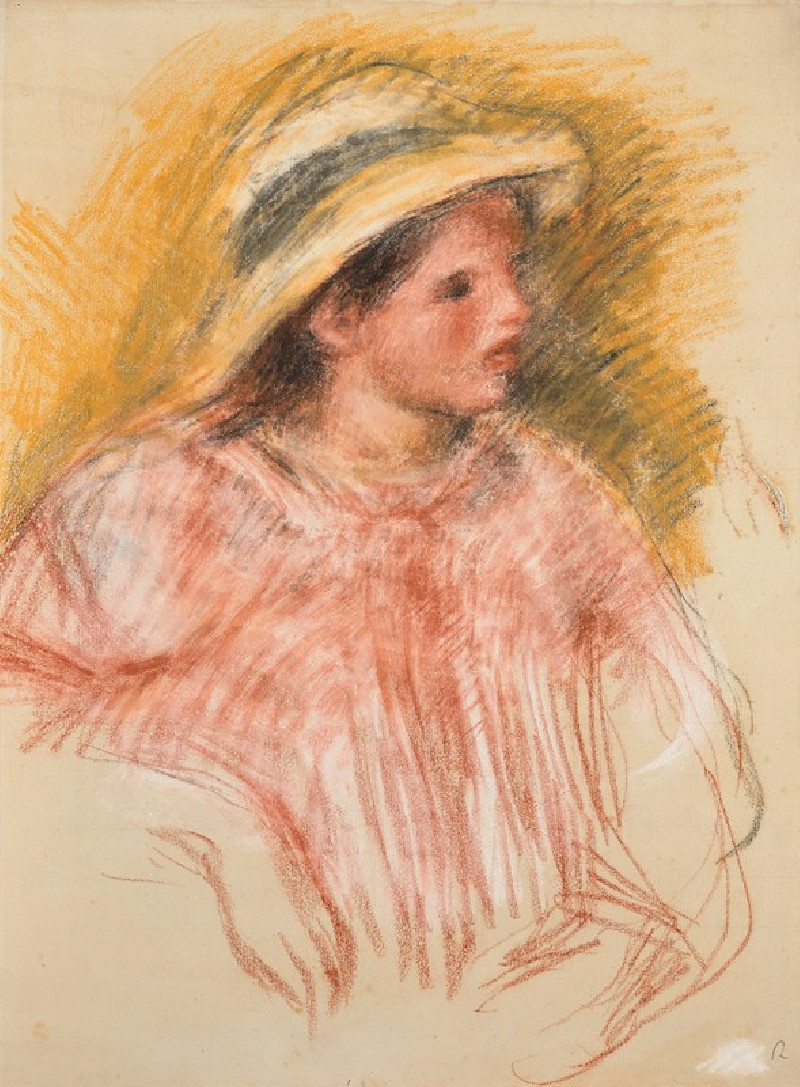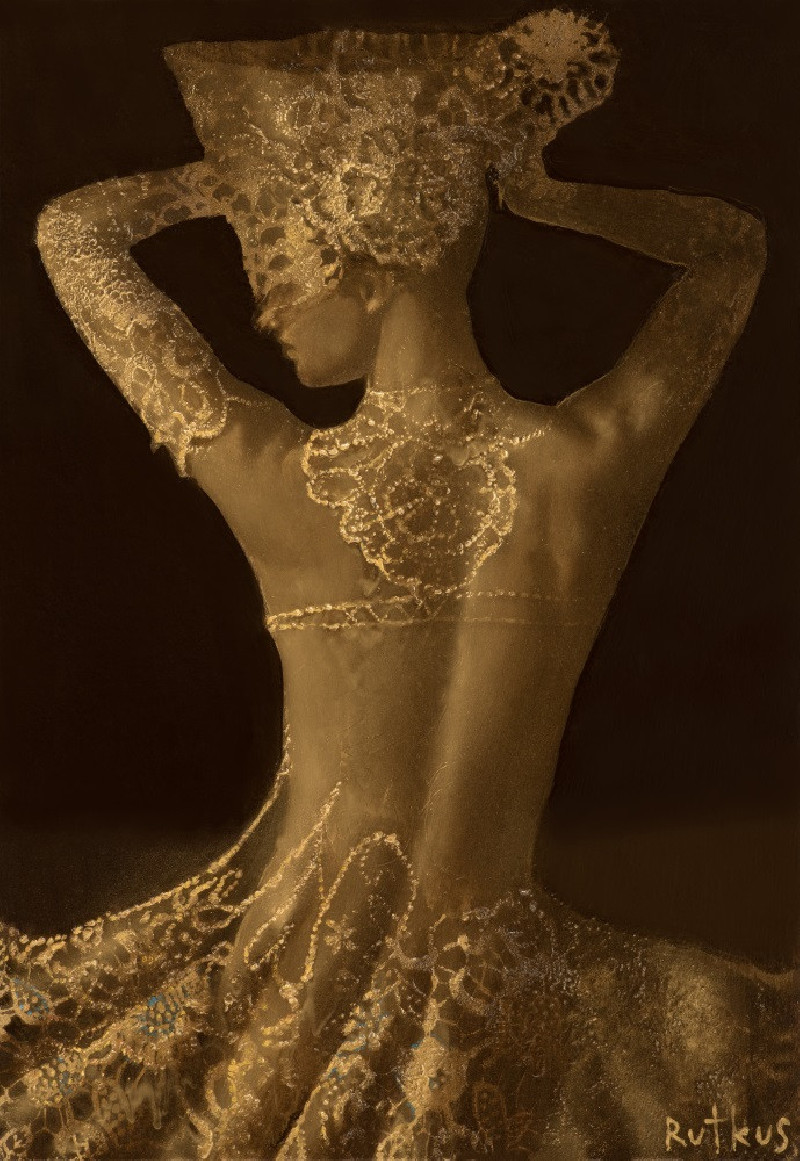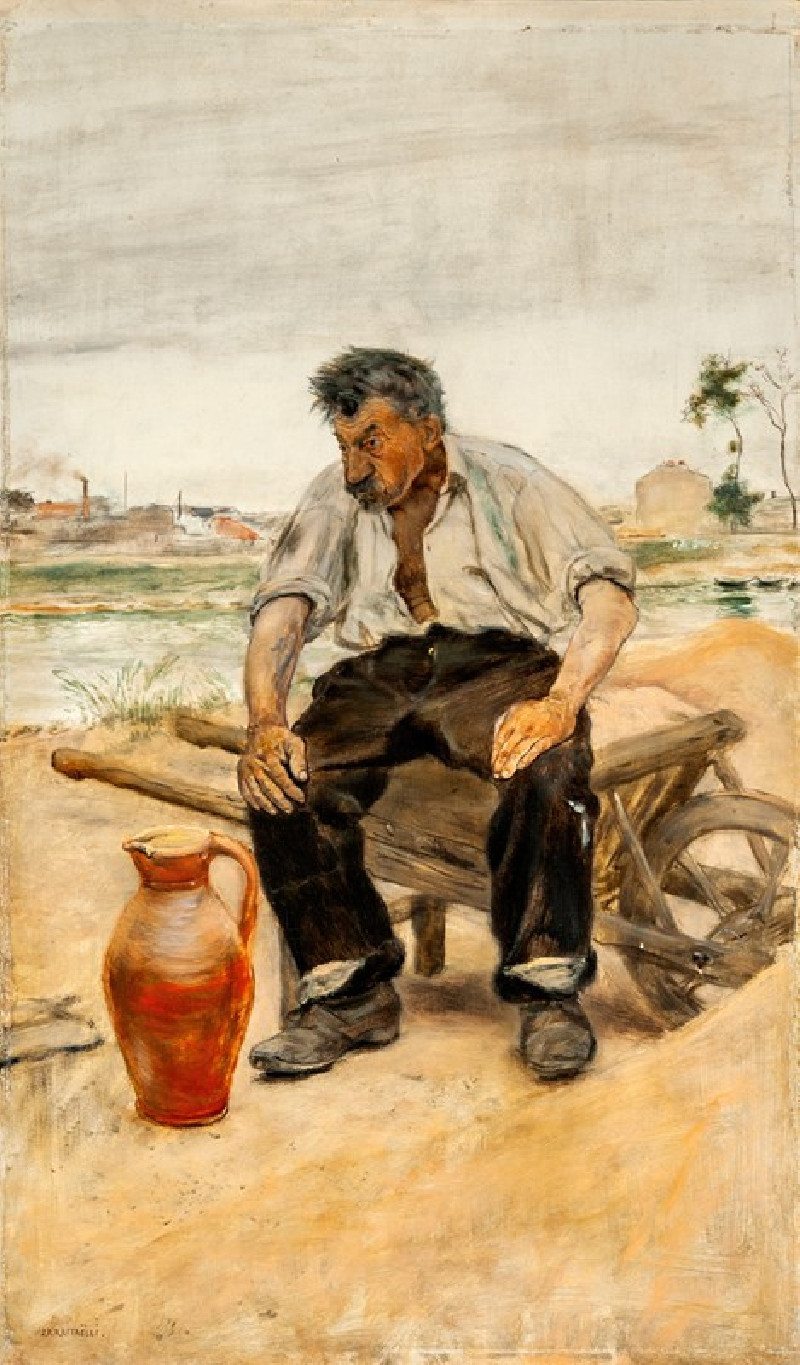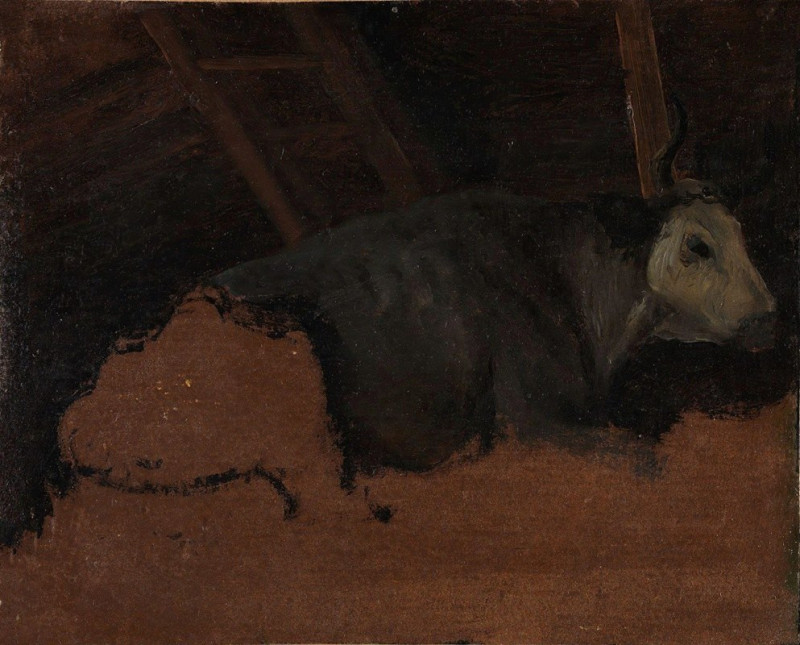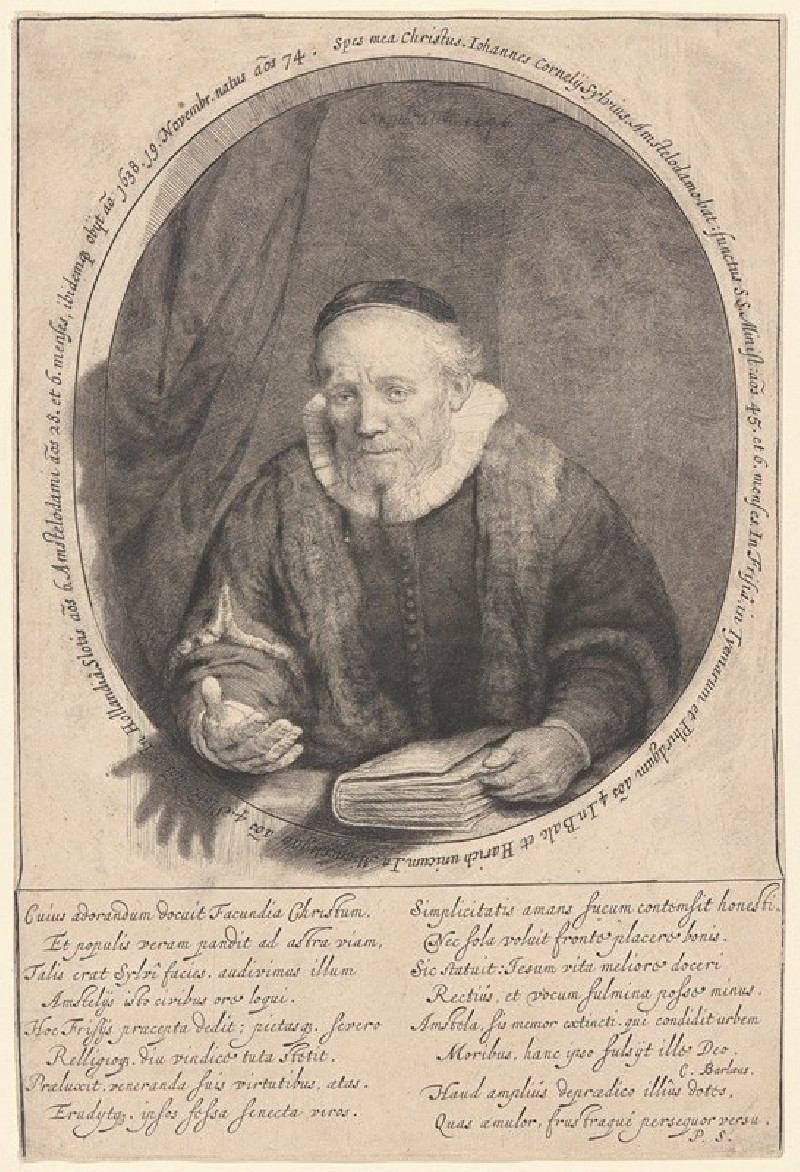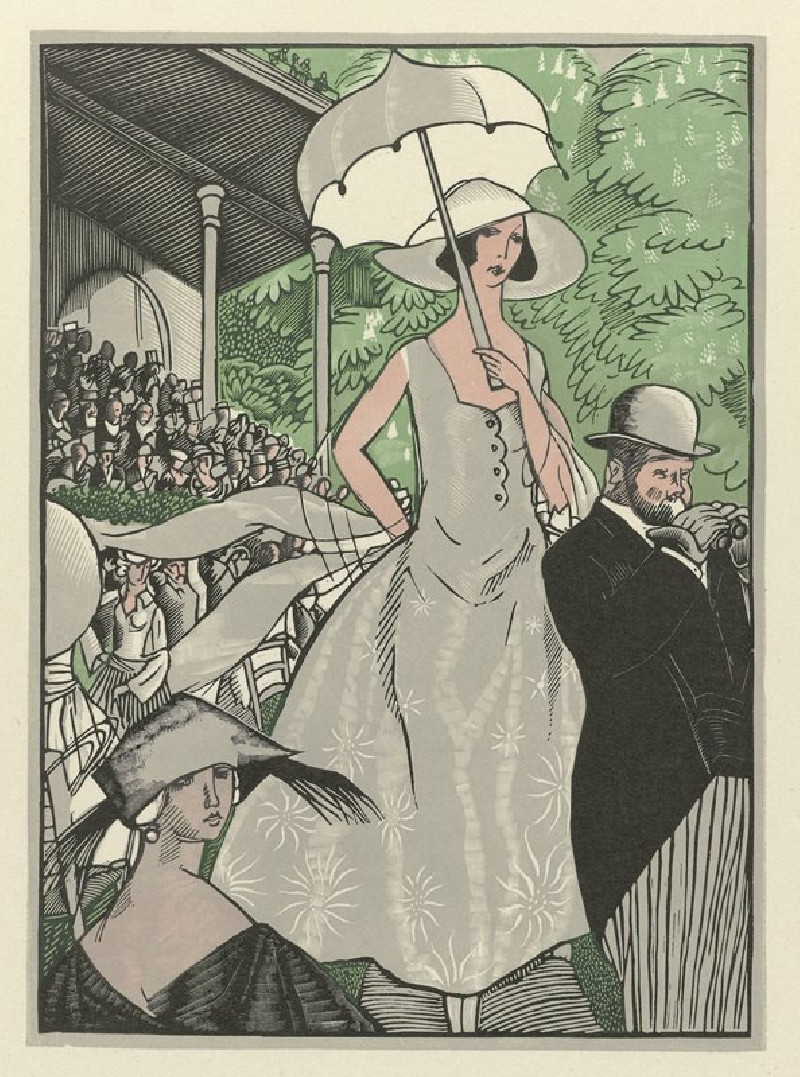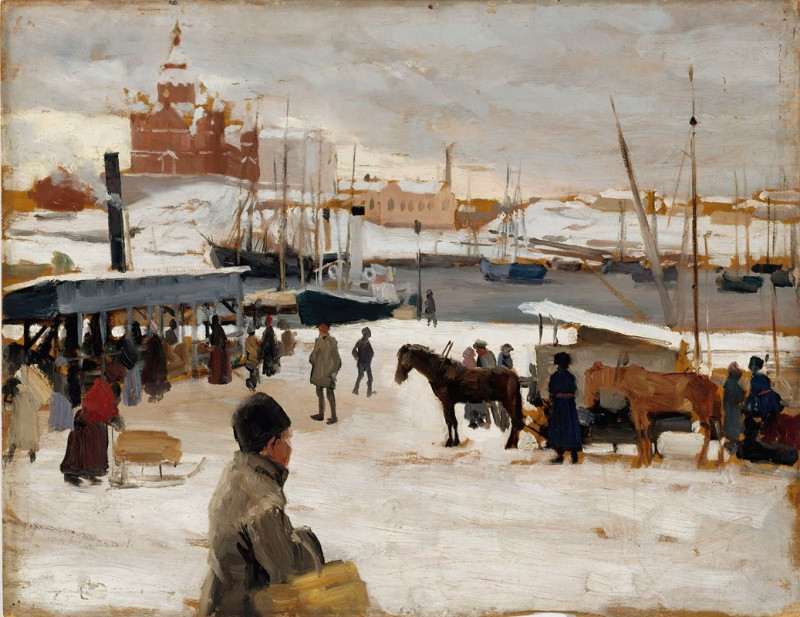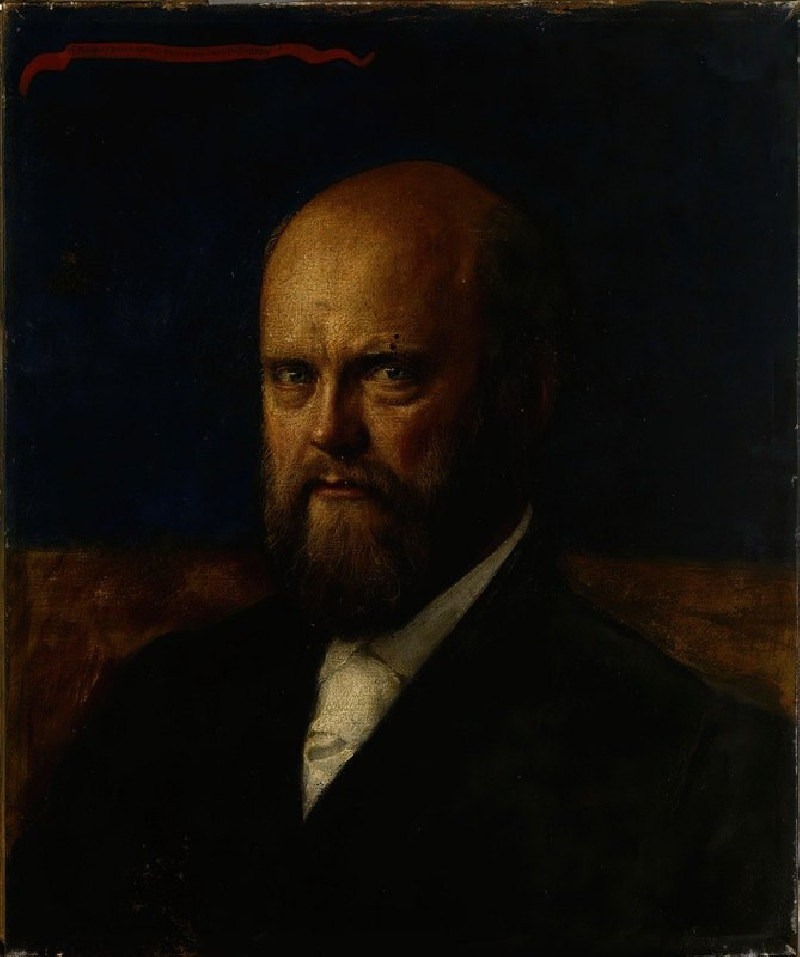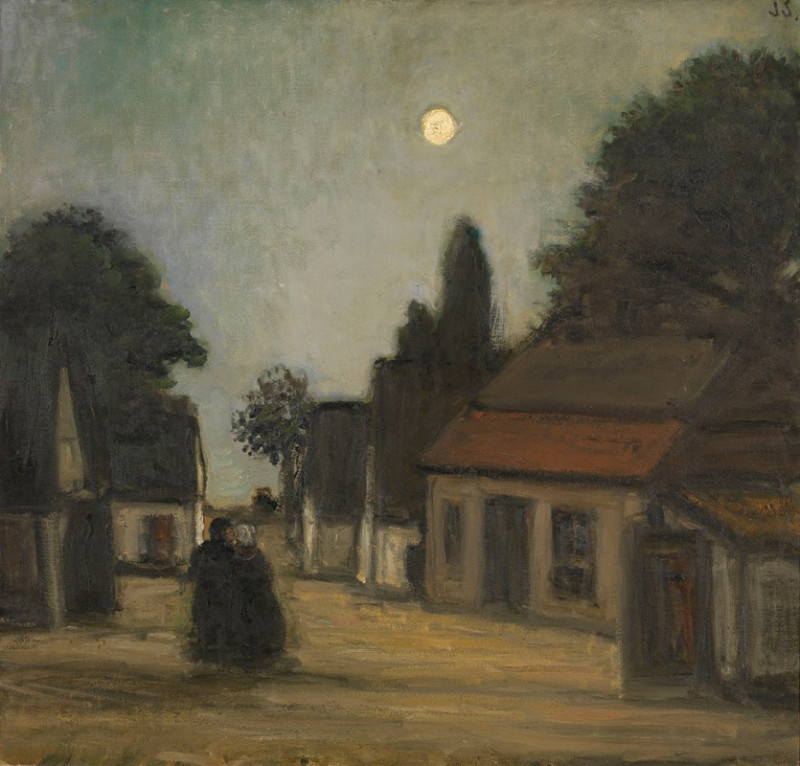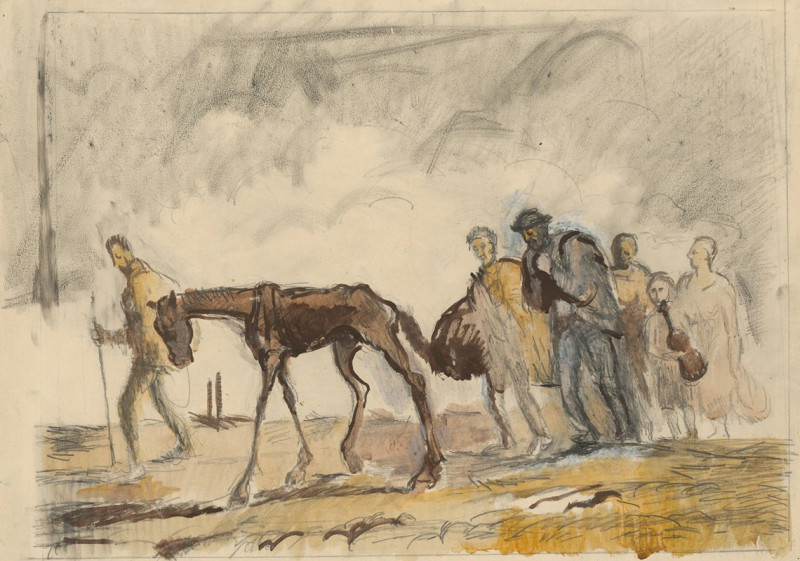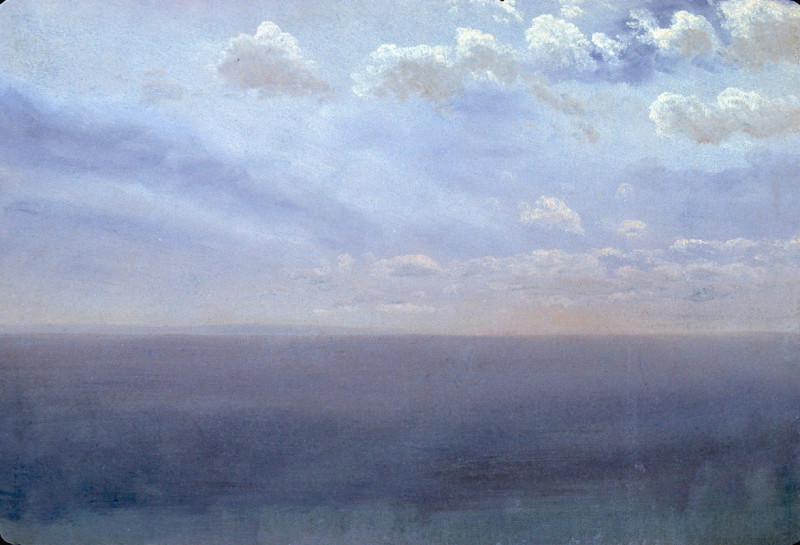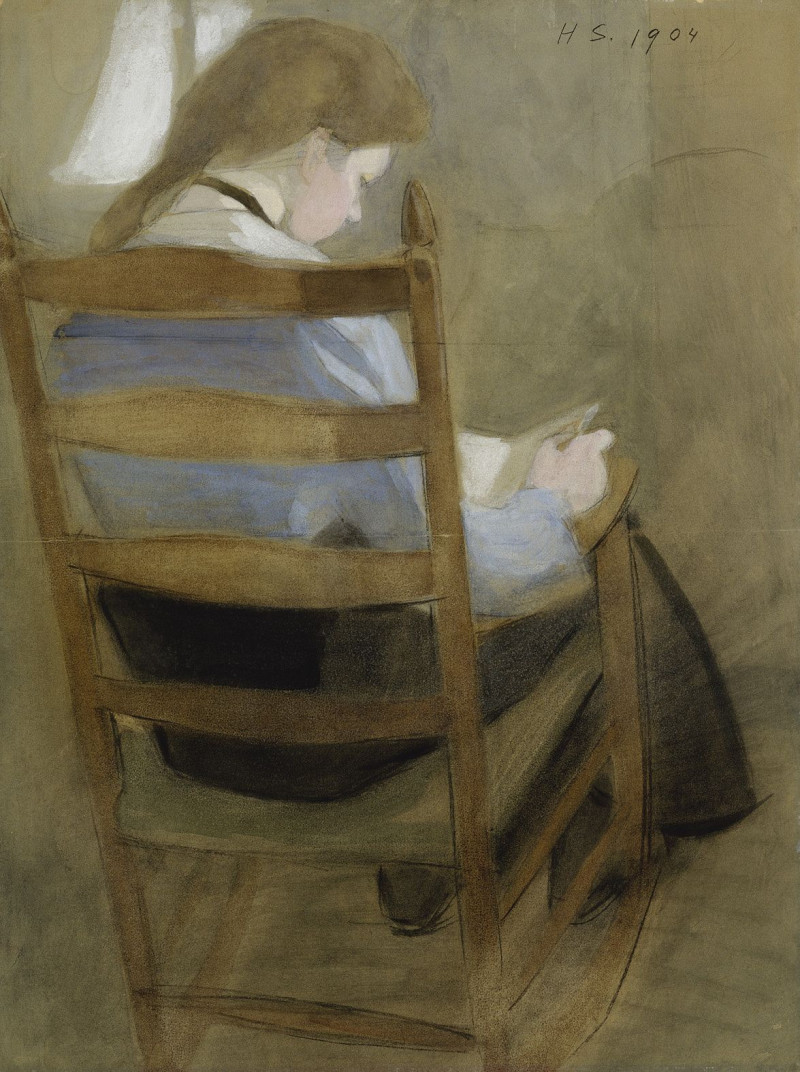Landscape near Petra (1868)
Technique: Giclée quality print
Recommended by our customers
More about this artwork
Our current exhibit features the mesmerizing work of Frederic Edwin Church, an eminent figure in the American art world, particularly known for his masterful landscapes. This painting, titled "Landscape near Petra" from 1868, invites viewers into a vast, arid expanse that captures the enigmatic beauty of the Middle Eastern desert near the ancient city of Petra.In this artwork, Church expertly uses a palette of earthy tones to portray the rugged terrain of the desert. The foreground features a series of undulating hills, their surfaces detailed with strokes that suggest a dry, rocky texture, giving a sense of the harsh yet sublime natural environment. The middle ground extends into a wide, open plain dotted with sparse vegetation and small figures that possibly represent the local wildlife or distant human activity, illustrating the scale and solitude of the expansive landscape. Above, the horizon meets a soft, pastel sky, where gentle clouds hover, contrasting dramatically with the arid land below.Frederic Edwin Church's distinct ability to blend realism with romanticism helps highlight the majestic isolation and untouched quality of this region, drawing viewers into a contemplation of nature’s vastness and beauty. His keen eye for detail and color not only transports one to this remote location but also evokes a sense of awe at the enduring spirit of the natural world."Landscape near Petra" is not just a visual journey; it is a testament to Church’s enduring fascination with nature and his skill in capturing its various moods and forms.
Delivery
Returns
Frederic Edwin Church (May 4, 1826 – April 7, 1900) was an American landscape painter born in Hartford, Connecticut. He was a central figure in the Hudson River School of American landscape painters, best known for painting large landscapes, often depicting mountains, waterfalls, and sunsets. Church's paintings put an emphasis on realistic detail, dramatic light, and panoramic views. He debuted some of his major works in single-painting exhibitions to a paying and often enthralled audience in New York City. In his prime, he was one of the most famous painters in the United States.

